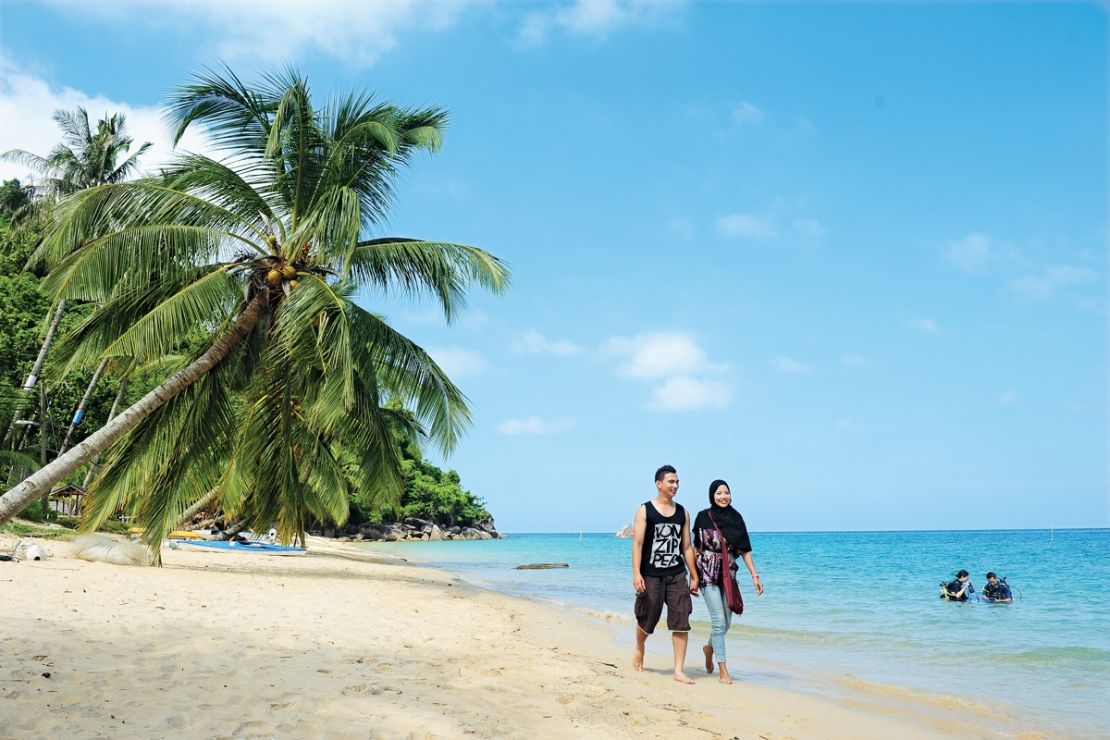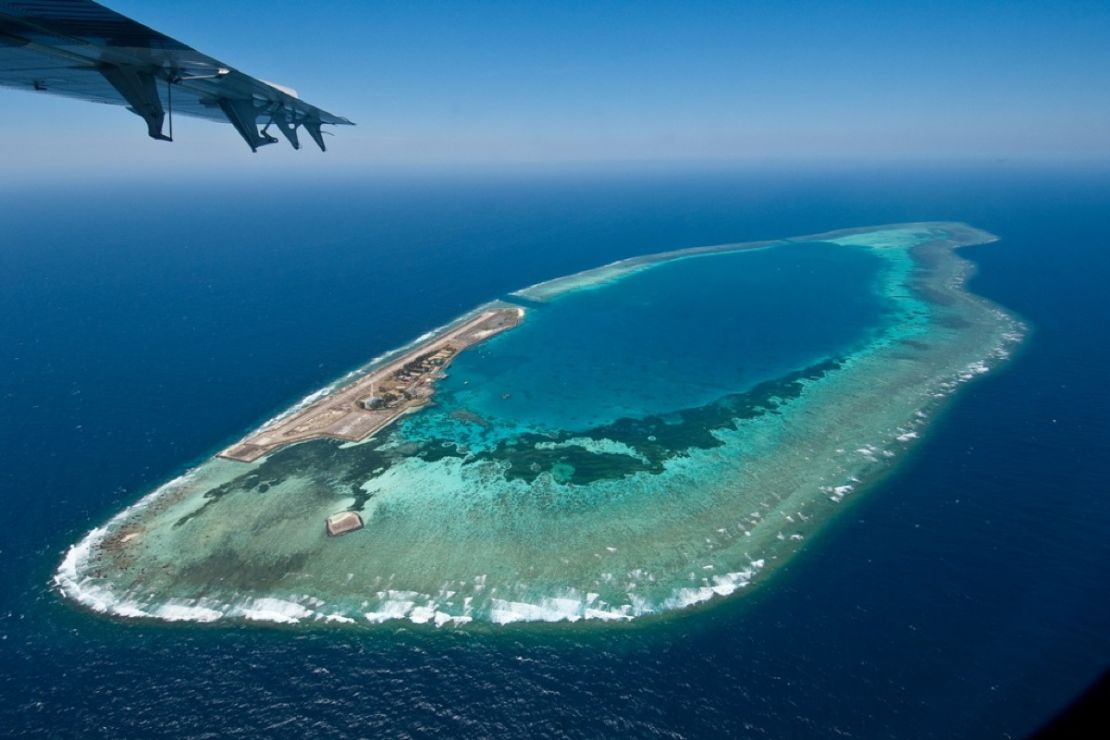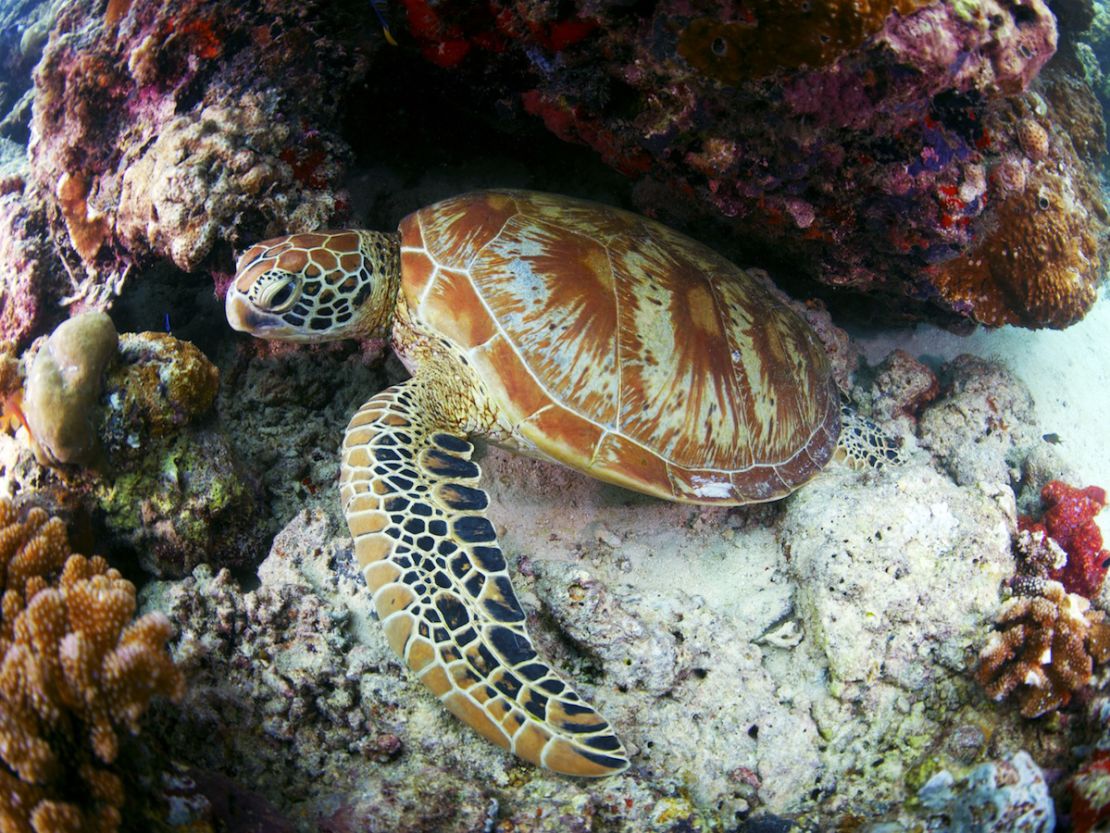CNN Travel’s series often carries sponsorship originating from the countries and regions we profile. However, CNN retains full editorial control over all of its reports. Read the policy.
From the cosmopolitan charm of Penang to the hippie getaway of the Perhentians, Malaysia’s diverse array of islands offers a huge variety of holiday options.
Here, in no particular order, we present our Top 5:
1. Perhentians: Hippie hideaway
While many backpacker haunts have become gentrified over time, the Perhentians (above) have managed to retain their low-key vibe.
They might not be easy to get to, but the Perhentian islands off the northeast coast of Peninsular Malaysia have achieved iconic status on the backpacker trail.
And for good reason – the waters are so clean that you can snorkel right off the beach and still see a diverse array of aquatic life.
Fishermen turned tour guides will also take you out in their small boat for a day trip to swim with sharks and turtles.
In the evening, beach bars set up cushions on the sand as wandering fire artists do their thing.
Where to stay: For high-end Malaysia holiday lodgings, check out the Tuna Bay Island Resort. Budget hunters should look up Abdul Chalet.
Getting there: Regular buses leave from Hentian Putra bus station in Kuala Lumpur, taking nine hours. Alternatively, fly from Kuala Lumpur’s LCCT airport to Kota Bharu, and then catch a taxi to the port town of Kuala Besut.
12 crowd-free Asia island escapes
2. Tioman: An island for flashpackers

Although part of the Malaysian state of Pahang, Tioman is actually reached from the Johor town of Mersing. There’s also a direct ferry from Singapore.
This popular Malysia holiday island has two claims to fame that continue to be hyped by media and marketers. One, the dramatic topography of this teardrop-shaped isle in the South China Sea was (supposedly) used as a backdrop for the 1958 movie “South Pacific,” while Time magazine named it one of the world’s most beautiful islands in the 1970s.
Though it’s now a firm fixture on the tourist trail and has lost a little of its exotic mystique, it retains — where many of its Southeast Asian contemporaries have lost theirs — the natural environment and wildlife that first made it famous.
First among animals, on land at least, are the giant monitor lizards that roam among the kampungs (Malay for villages) in search of food. Don’t worry, they avoid humans. Most of the time.
Where to stay: They don’t come more recommended than Bagus Place Retreat, winner of a 2012 Travellers’ Choice award from TripAdvisor. For a boutique experience, check outJapaMala.
Getting there: There are bus services from all over Malaysia to Mersing,; from here it’s a two-hour boat ride to the first jetty on the island. Tioman also has a small airport, which Berjaya Airways flies to from Kuala Lumpur and Singapore.
3. Langkawi: Best for luxury

Located hard by the border with Thailand, Langkawi is part of the Malaysian state of Kedah, not Perlis which is in fact directly adjacent.
Famously, the Malaysia island was believed to have been cursed in 1819, when a woman named Mahsuri, was put to death for alleged adultery. Before she died, she uttered the words, “There shall be no peace and prosperity on this island for a period of seven generations.”
Two years later Langkawi fell to the invading Thais, with much of its population subsequently dying from starvation. The island was then indeed barren for a long time, before Prime Minister Mahatir Mohamed — the colossus of Malaysian politics who also built Kuala Lumpur’s Petronas Towers and the Sepang F1 circuit — decided to turn it into a resort island in 1986.
He declared it a duty-free island, and ever since then Langkawi’s growth has been nothing short of spectacular, with high-profile resorts dotting its sandy shores to make it a Malaysia holiday star.
The best way to take it all in is on the 2,200-meter-long cable car, which rises some 710 meters above sea level. Interestingly, Mahsuri’s husband and son moved to Phuket after the Thai invasion, and it was on that island that her seventh generation descendant was born — in the year 1986. Coincidence?
Where to stay: They don’t come much more stylish — or eclectic — than Bon Ton, eight traditional Malay homes set in a former coconut plantation. Or there’s always the Four Seasons Resort Langkawi.
Getting there: Langkawi has by far the best flight connections of any Malaysian island, with dozens of daily flights to Kuala Lumpur, Singapore and Penang.
Langkawi: Insider Travel Guide to Malaysia’s island paradise
4. Layang-Layang: Isolation guaranteed

Little more than a coral reef with a runway, the tiny island of Layang-Layang is located some 300 kilometers northwest of the Sabah capital of Kota Kinabalu (KK), the state to which it belongs.
It’s a creation of the Malaysian Navy, which reclaimed land from the sea in order to state the nation’s sovereignty over the Spratlys, that South China Sea island group also claimed whole or in part by China, Taiwan, Vietnam and the Philippines.
Surrounded by pristine waters that drop to 2,000 meters, Layang-Layang is often ranked as one of the top 10 dive sites in the world due to its remarkable array of marine life.
Due to the Navy’s presence, the coral reef has been spared the explosive damage caused by dynamite fishing and other destructive practices, leading to underwater visibility of more than 40 meters.
Particularly of note are the schools of scalloped hammerhead sharks, which can sometimes number in the hundreds, though you can also expect to see manta rays, dolphins, barracuda and turtles.
Where to stay: Easy one to answer. At the only game in town, the traditional-styled Layang Layang Island Resort run by the Avillion group.
Getting there: The only way in and out of this Malaysia island is on a charter flight from Kota Kinbalu, with the price included in the various packages offered by the only place to stay on the island.
5. Sipadan: For hard-core divers

At the end of 2002, following a long dispute with Indonesia, the International Court of Justice ruled that the island of Sipadan was Malaysian.
The country, and the state of Sabah which it is part of, have reason to be relieved. Sipadan is often rated as the world’s best dive site, with a location in the centre of the planet’s most bio-diverse marine habitat.
In order to protect the fragile ecosystem of this Malaysia holiday destination, in 2004 the government ordered all of the dive resorts off the island, banned night dives and set a limit of 120 divers per day.
The move worked, as the surrounding waters continue to teem with life. It’s home to 3,000 species of fish, hundreds of species of coral, an abundance of rays and sharks and large populations of green and hawksbill turtles — so much so there is a famous turtle tomb, an underwater labyrinth that has drowned many of the unfortunate sea creatures.
Where to stay: As you are not allowed to stay on Sipadan itself, stay close by at the Sipadan Kapalai Dive Resort built on stilts over the water or Sipadan Pom Pom Resort.
Getting there: It’s a 55-minute flight from Kota Kinbalu to the town of Tawau, an hour’s drive to the even smaller township of Semporna, and then a 40-minute speedboat ride.




